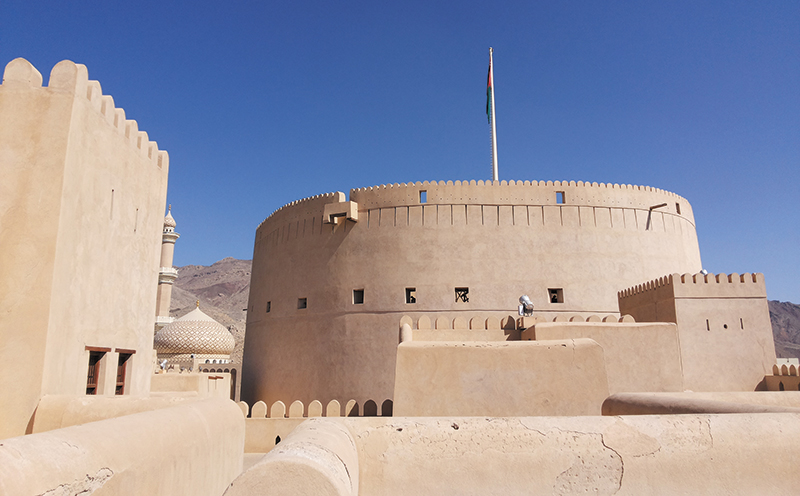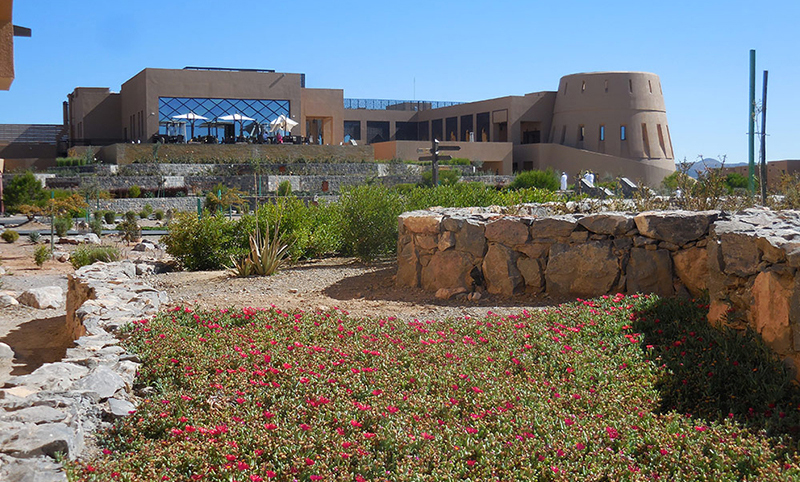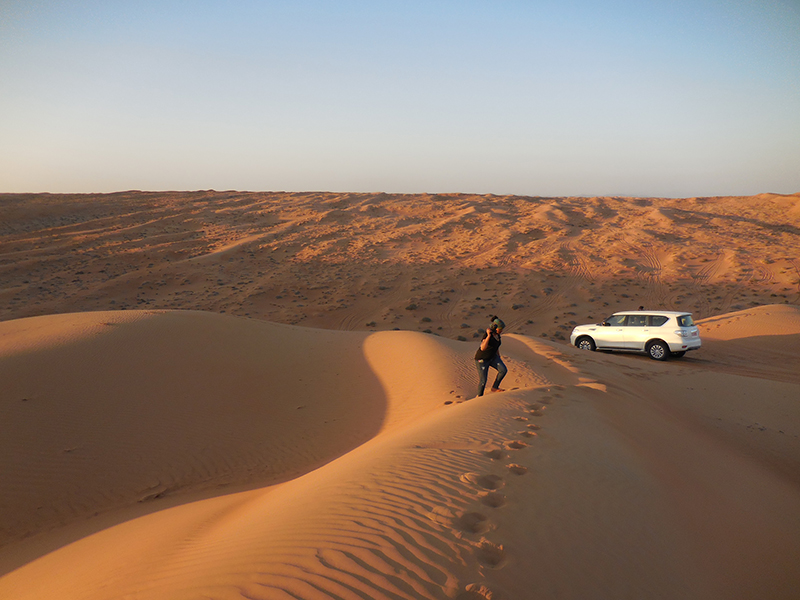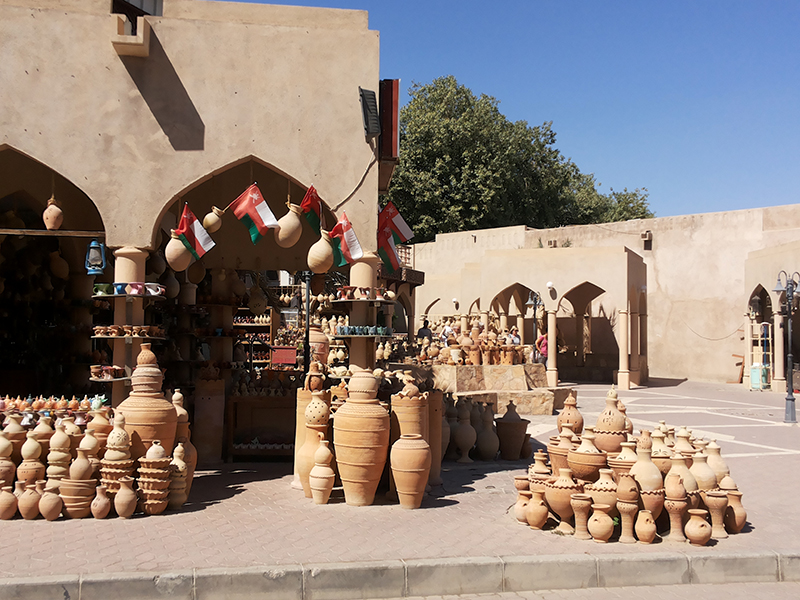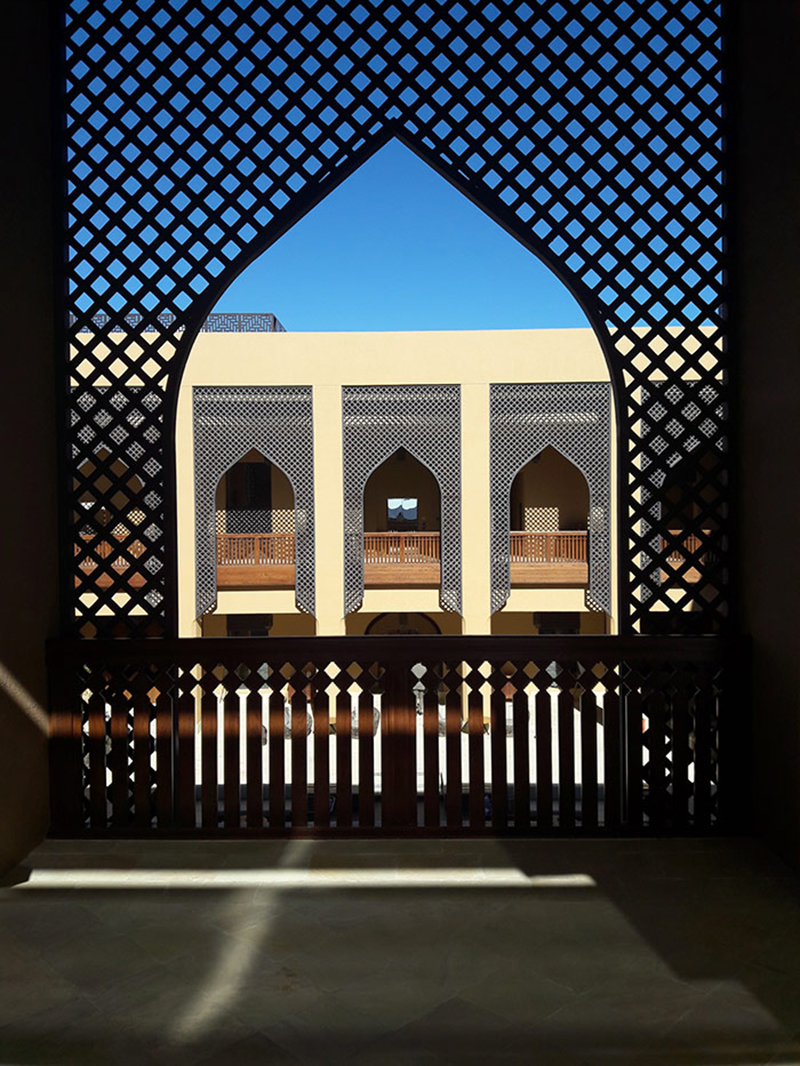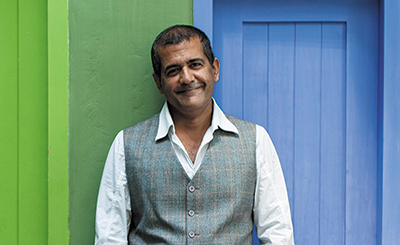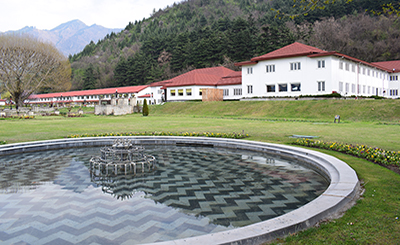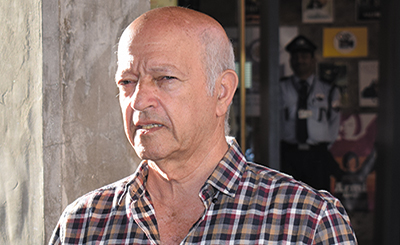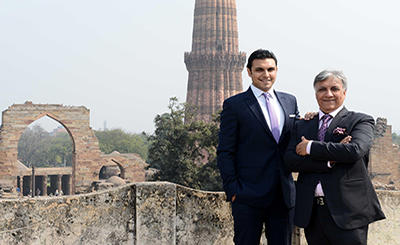It was nothing like I had expected. While that could be said about all of Oman itself, Nizwa, named one of the must-visit places for this year by various travel lists, is an old town at a crossroads of desert and mountains, suspended somewhere between traditional roots and creeping modernity — all below an unbelievably deep azure sky.
Just about 130 kilometres southwest of Muscat, Nizwa is an unusually smooth 90-minute drive through the desert from the sprawling national capital, but it might as well be a world away. While modern commerce and retail, cobalt seas and majestic opera houses and bejewelled mosques dominate the three cities that comprise Muscat, Nizwa’s core is still a medieval fort and a traditional souk where every Friday you could buy and sell goats or cattle or camels. You bargain well, right? Camels ain’t cheap, not even in interior Nizwa. My attempts at camel-buying were a little mistimed — camels are over by 0730, so go early if you want options!
Nizwa is literally at a crossroads of the modern nation of Oman, which has transformed into its present rather liberal avatar under the present sultan. The town, at the base of Hajar Mountains, is where you could also glimpse remnants of an older Arabic civilization.
The Past...
Nizwa was the capital of Oman in the 6th and 7th century, and is known for being one of the first cities to convert to Islam. For centuries, it was a seat of conservative Islamic scholarship, especially after the Imams of Oman decided to base themselves here in 792 AD. Rather remote geographically, it flourished for centuries as a centre of Islamic education, trade, culture and arts, and was considered hostile to outsiders even in middle of the 20th century, when British explorer Wilfred Thesiger was forced to steer clear of Nizwa, as going there would have meant endangering his life.
Today, the most spectacular reminder of that past comes from the impressive Nizwa Fort. Get this, Oman is dotted with hundreds of forts, including some in the neighbourhood, but the magnificent fort here, dating back in its present iteration to the late 17th century, is one of the most important, and was the stronghold of armed opposition to Muscat as recently as 1950. The foremost feature is a circular structure 35 metres high, with a diameter of 46 metres — imagine a massive squat brown mud drum rising to the skies, and marked with narrow slits — to pour hot oil from, if you are a sucker for fanciful tales. Petroleum’s use is a recent discovery, guys! Arrows would be a truer guess.
The museum inside the fort has detailed historical representations of the region’s past, and is well worth taking time over. The view from the top is one of best in this nation — cannons and ramparts overlooking the town’s baked mud and white roofs, a wadi (valley) fringed with laden lush green date palms, with the majestic Hajar mountains in the backdrop.
The main block of the resort, Anantara Al Jabal Al Akhdar
It is here that many of Nizwa’s famed attractions lie. Jabal Shams is Oman’s highest peak, and offers breathtaking views of Wadi Nakhr, a gorge bested only by the Grand Canyon. With an almost vertical, 1,000-metre drop, those with vertigo are well advised to stay away, through the rest can have the thrill of their lives. A visit at midday ensures the shadows are at a minimum, ensuring best photographs! The Balcony Walk takes about four hours and creates memories for life. Even the way to the top, possible only in 4x4 offroaders, through rocky desert-mountain roads interspersed by sudden springs, is an adventure.
Then there is Falaj Daris, an aflaj or gravity-fed irrigation system. This falaj has been in operation since at least 500AD, though is possibly much older. Wondrous, and included by UNESCO in its heritage list, it is a testament to human ingenuity and survival skills in even such climatically harsh environs.
Just as amazing a settlement is Al Hamra, a 400-year-old town built on a tilted rock slab. Budget quality time to marvel at the almost perfect ruins of the houses, among the oldest in the country.
The desert is not too far away either, with ample scope for camping or dune bashing
... And the present
Today, the focal point is the souk — multi-faceted during different times of the day. The mornings are reserved for vegetables, fruits and dairy daily, including once the livestock transactions are done early on Friday. Meat sellers sit a little apart. Fish can smell, especially when temperatures soar near 50°C, so beware. In another part, the souvenir shops open later, just as busloads of tourists begin arriving for the fort tour. After a long afternoon break, the evenings are more irregular, and many stalls remain shut. When open, expect shouting, haggling and high fives/bearhugs as men in white dishdashas and black abaya-clad women create a lively hubbub of human communication.
As a tourist, you have to buy local dates. The region around is famous for its dark, plump varieties. For less transient purchases, there are traditional handcrafted silver khanjars (daggers) — expensive to touristy, and Maria Theresa thalers, once Oman’s official currency. Of course, there’s pottery, rugs, carpets, antique looking silverware, rustic (could be rusty too) wooden chests, frankincense, fort replicas and yes, a lot of weaponry! Bargain for everything, even when the last is pointed straight at you!
You must also try the diverse flavours of halva sold here. To add to the allure, they come in cute earthen pots, which you are loath to discard once the contents have been consumed. Spices are commonly sold and their fragrance hangs in the air, but as a lot goes from India, may be you could buy those closer home!
The souk at Nizwa has a section for souvenir shops, but do explore beyond!
Urban and mountainous, historical and contemporary, Nizwa may not be easy to navigate on your own, but a good guide can make a huge difference. On the plus side, a 4x4 comes with the guide — there is no public transport! It is a world apart, as you shall discover!
The stay
Oman is emerging as one of the most sought-after destinations globally, and luxury hotels have taken note. I was fortunate to stay at the just inaugurated Anantara Al Jabal Al Akhdar, a hilltop luxury resort that could well take your breath away. It occupies an entire hilltop in the Hajar Mountains, and an altitude of 6,500 feet means the drive is nothing short of spectacular. Nor are the first glimpses of the resort, as I realise it’s next to a deep cliff! But more on
that later.
About five years in the making, the resort itself is a much anticipated one. Not the least because it has ‘Diana Point’. Local lore will point out that Diana, Princess of Wales, came to the spot in 1986, well before any hotel was even conceived, to take in the gorgeous views.
Well, today, the views are offer-wrapped in a cocoon of luxury that is the resort. All around are steep mountain ranges and deep valleys. Here and there are ledges where strips of agriculture seem to have taken root, courtesy the falaj. Oh, yes, with little luck, you could spot fauna — mountain goats, wolves, foxes, deer — making for moving images in the brown-grey landscape.
Anantara Al Jabal Al Akhdar’s architecuture incorporates local design elements, including arches and lattice work
Once inside, you could be forgiven for thinking you were suddenly roleplaying in a recreation of fort life from a bygone century. Imagine living in a fortress from an era gone by — forbidding citadel-like exterior (or sheer cliff face) and the best of luxury therein. The entrance to the resort is through the main building, and then the rest of the low-rise structures spread out in a rough circle all around the edges of the hilltop, crisscrossed by stone paths.
The resort has 115 rooms in different categories. I would suggest the “One Bedroom Cliff Pool Villa” — not because the 2,000 ft plus luxury accommodations, the personal butler, the traditional, and very comfy décor and furniture, the lovely wooden floor, the wide array of complimentary f&b in the room, the interactive LED TVs, the novels (yes, there are actual books meant for reading, not just coffee-table ones), the huge closets, the three kinds of bathing venue choices (a deep bath, a white and silver tiled shower area, sort of invoking a hammam, and an outdoor rain shower, since you asked), the Amouage amenities — but The View. Attached to each cliff view accommodation (can’t recommend it enough) is an infinity pool, beyond which is a seemingly infinite landscape. This is how I imagine moonscape to be!
It is hard to come away, but life in a fortress can be hectic. If you want, of course. Exploring what’s on offer may actually take more time than you have budgeted for, especially if trips to Nizwa and the elsewhere are part of your plan. The resort offers hiking, mountain biking, abseiling, archery, all within the resort. Anantara’s Spice Spoon programme — customised for each location — here includes a cooking class with an Omani chef that begins with a visit to Nizwa souk. In case local history and culture are your poison, a village walk with a “mountain guru” aka local guide through some neighbouring villages, some almost abandoned (there was one person still living in the first village we went to!), stumbling through pathways narrower than you (I am, as they say, generously proportioned), walking on falajs, through briar in undulating surfaces, fairly steep climbs, might be an option. I loved it! Kids and teens have separate zones — and a seriously huge array of activities to choose from and the gym facilities mean adults can keep pretty active if they choose to. There are some shops in the resort, also a library, meeting facilities etc, but time ran out before I could explore them.
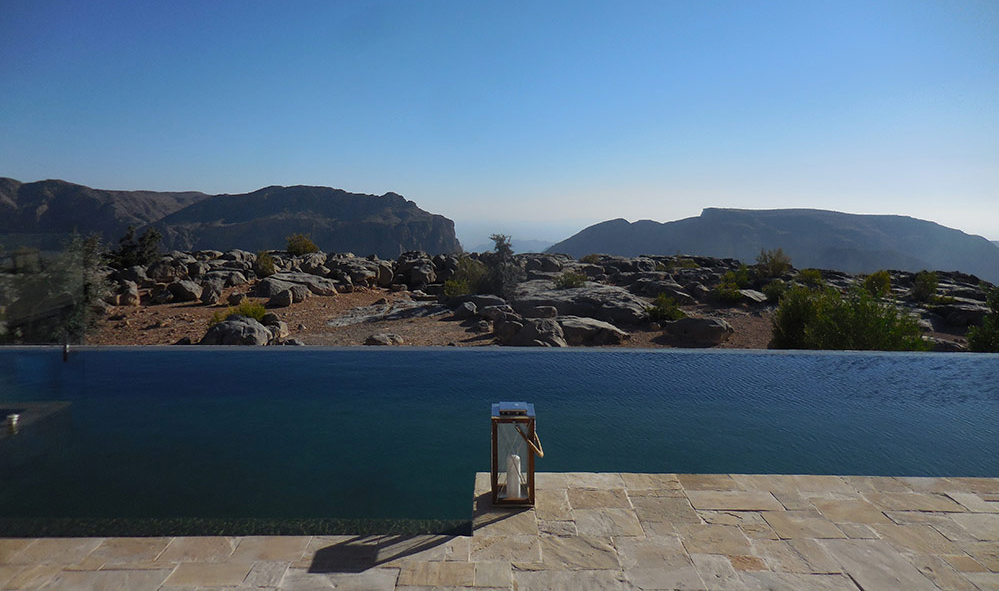
Infinity and beyond: At Anantara, view from a villa
The extensive spa is noteworthy just for its aesthetics, and includes a hammam, indoor pools, thermal suites and signature treatments using local ingredients such as rose and pomegranate. Yes, the 90-minute signature Pomegranate Journey comes highly recommended.
If all the activity and massaging have made you hungry, well, the resort has a number of eateries, from a deli to an international cuisine restaurant (Al Maisan). Specialty cuisine restaurants include Al Qalaa for Arabic and Bella Vista for Italian (best views here too!). There is also a Moroccan shisha lounge and if, of course, your cliff view makes it too enticing to get up, order in room! Yes, distances within the resort can be considerable, even with golf carts!
Even if the overall feel is traditional, aesthetics dominates every way you look. Architect Lotfi Sidirahal has used the spaces to blend in local traditions with a contemporary touch, from the stunning architecture, local stone cladding interspersed with lattice work, the occasional turrets, a mini city-like garden area and more. Deft touches to the interior, only to the feeling of general well-being.
The scale of the resort is perhaps what astonishes. It is so spacious that you might just not meet anyone if you don’t want to! It just as well also be a byword for luxury, scaling new heights of what a pampered, yet sustainable vacation might entail, despite water being carted to the hilltop, not the least for forty, yes 4-oh waterbodies all around the resort. It could well be a once in a lifetime journey. Till you get tempted once more!
How to get there
Nizwa is about 1 hour and 30 minutes southwest of Muscat on Highway 15. Roads in Oman are exceptionally well maintained, as you shall discover.
The nearest international airport is Muscat from where there are direct flights to most major Indian cities.
Anantara Al Jabal Al Akhdar is a two-hour drive from Muscat International Airport, and four-and-a-half hours from Dubai. From Nizwa Fort, it an hour’s drive. Quick note, a four-wheel drive vehicle is required to access Al Jabal Al Akhdar Mountain. Double rooms from OMR 150 in low season; OMR 230 in high. Tel: +968 2521 8000;
[email protected].
